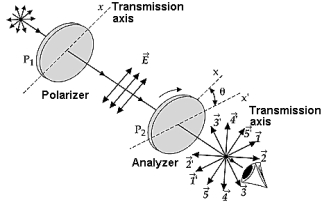Multiple Choice
 Two polarizing films are crossed with their transmission axes making an angle of = 20° with each other. The vectors that represent the plane-polarized wave train passed by the second polarizing film are
Two polarizing films are crossed with their transmission axes making an angle of = 20° with each other. The vectors that represent the plane-polarized wave train passed by the second polarizing film are
A)  -
-  '
'
B)  -
-  '
'
C)  -
-  '
'
D)  -
-  '
'
E) None of these is correct because no light passes through the second disk.
Correct Answer:

Verified
Correct Answer:
Verified
Q5: If you look at a dot on
Q6: <img src="https://d2lvgg3v3hfg70.cloudfront.net/TB6081/.jpg" alt=" The light ray
Q7: Of the following quantities,the one that is
Q9: <img src="https://d2lvgg3v3hfg70.cloudfront.net/TB6081/.jpg" alt=" A ray of
Q35: The index of refraction of water is
Q49: Use the following figure to answer
Q50: Light is circularly polarized if<br>A)the cross section
Q54: A small beam of monochromatic light in
Q57: A ray of light passes from air
Q79: When taking a picture of a